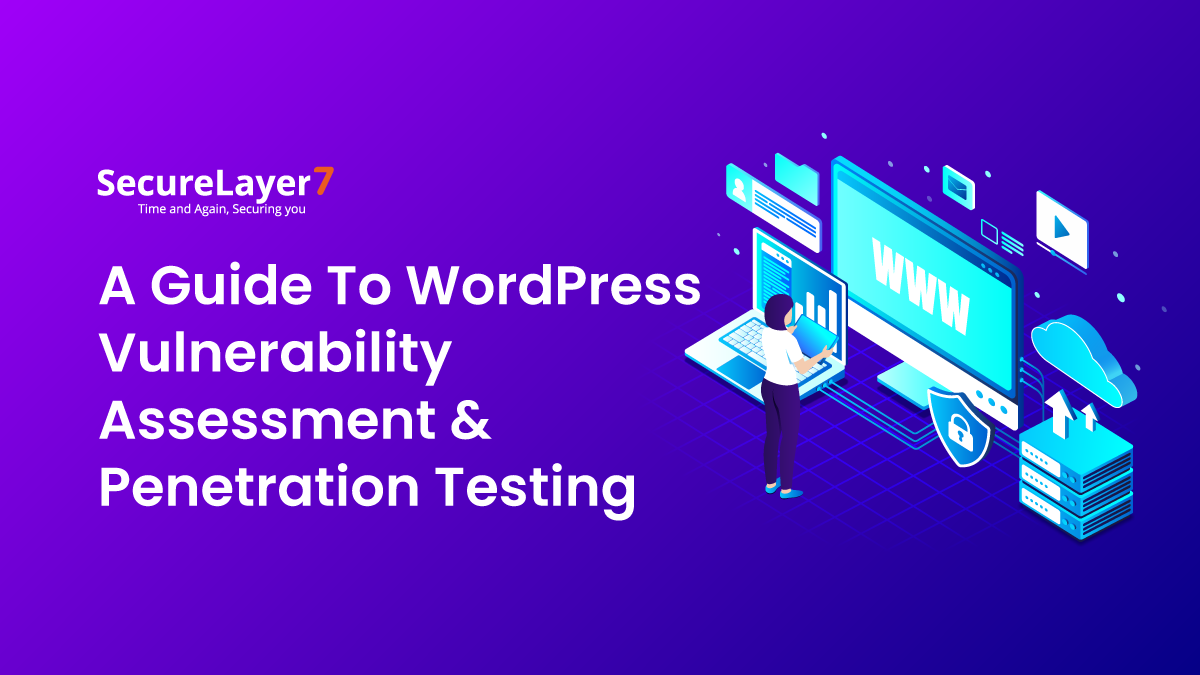
A Guide To WordPress Vulnerability Àssessment & Penetration Testing
August 10, 2023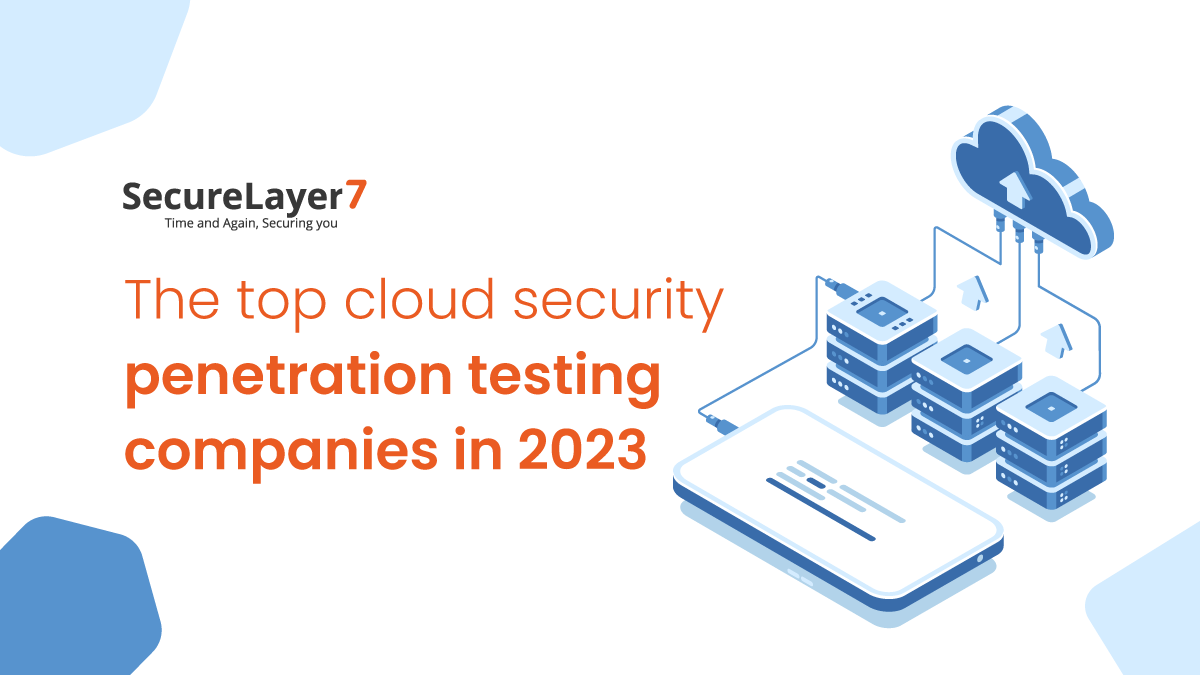
The Top Cloud Security Penetration Testing Companies In 2023
September 5, 2023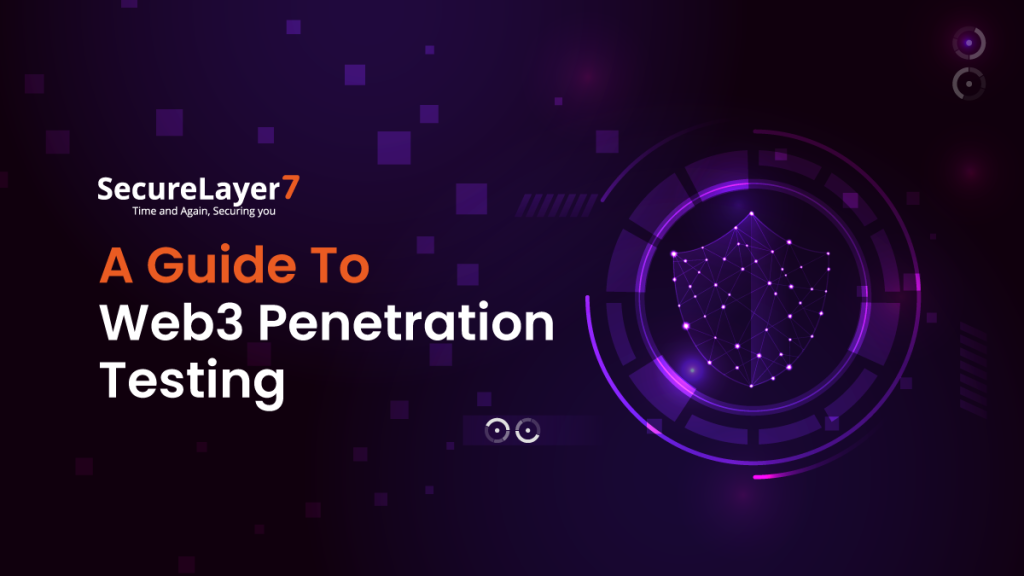
Web3 development has been gaining significant momentum in recent years, with a growing number of companies and developers embracing the principles and technologies associated with the decentralized web.
Web3, which refers to the third generation of internet development, is centered around blockchain, decentralized applications (dApps), and smart contracts.
This new paradigm is reshaping various industries, including finance, supply chain management, gaming, and more.
The rise of web3 can be observed through the increasing number of companies and products being built in this space.
According to recent statistics, the number of web3 companies has been steadily growing. In 2020 alone, the market capitalization of web3 companies reached over $25 billion, and this figure has continued to rise.
The total value locked in decentralized finance (DeFi) protocols has surpassed $100 billion, demonstrating the substantial growth of the ecosystem.
However, with this rapid growth and adoption of web3 technologies, there arises a pressing need for robust cybersecurity measures.
As the web3 ecosystem expands, so does the potential for security vulnerabilities and attacks. With decentralized systems, the attack surface broadens, as there are various points of entry that adversaries can exploit.
This necessitates a proactive approach to security to protect user funds, data, and the integrity of the underlying blockchain infrastructure.
What is Web3 penetration testing?
Web3 penetration testing is a comprehensive security assessment that focuses on evaluating the security of decentralized applications (dApps), smart contracts, and blockchain networks.
It involves simulating real-world attacks to identify vulnerabilities and weaknesses in the web3 ecosystem, with the goal of enhancing its overall security.
Here’s a detailed outline of what web3 penetration testing entails and how it differs from traditional web app penetration testing:
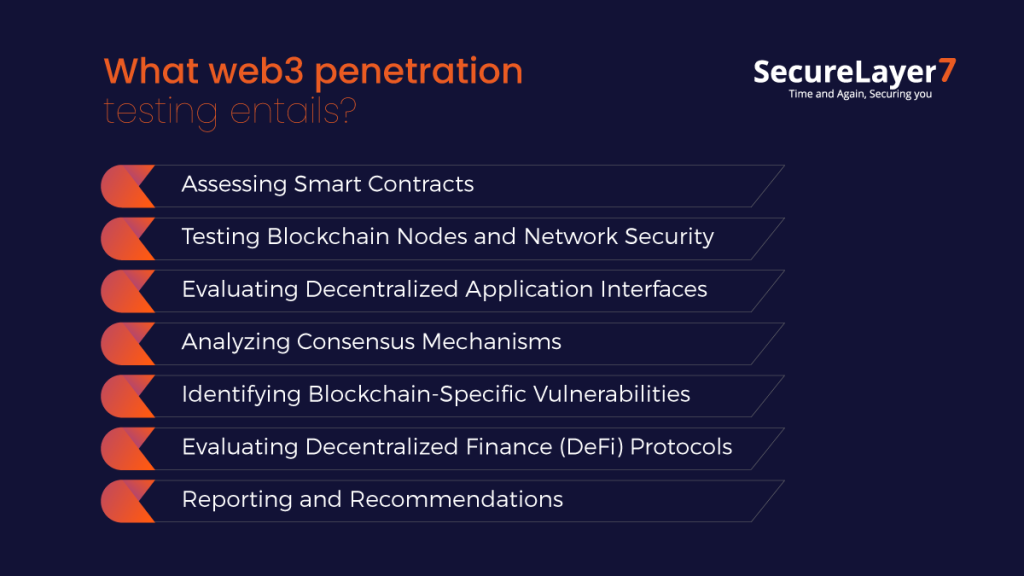
We will get to know about all the aspects in details.
Understanding the Web3 Environment
To conduct web3 penetration testing effectively, it is essential to develop a deep understanding of the web3 environment.
This involves getting familiar with blockchain networks, decentralized storage systems, consensus mechanisms, and the underlying protocols that power the decentralized web.
By gaining this knowledge, penetration testers can better grasp the intricacies of web3 technologies and comprehend the security implications unique to this ecosystem.
It enables them to identify potential vulnerabilities and weaknesses specific to blockchain-based applications and networks.
Understanding blockchain networks entails knowing how they operate, the role of nodes in maintaining the network, and the consensus mechanisms that govern transactions and secure the system.
This knowledge helps testers assess the security of these critical components and identify any weaknesses or misconfigurations that could be exploited.
Decentralized storage systems, such as IPFS (InterPlanetary File System), allow data to be stored across multiple nodes, providing resilience and privacy.
Understanding these systems is crucial for assessing the security of data storage and retrieval mechanisms and ensuring the integrity and confidentiality of user information.
Consensus mechanisms, such as Proof of Work (PoW) or Proof of Stake (PoS), determine how transactions are validated and added to the blockchain.
Having a firm grasp of these mechanisms is vital for evaluating the security and resilience of the network against potential attacks or manipulation attempts.
Additionally, understanding the underlying protocols used in web3 development, such as Ethereum, Polkadot, or Cosmos, helps penetration testers comprehend the technical details and potential vulnerabilities associated with these platforms.
It allows them to assess the security of smart contracts, interact with dApps, and identify weaknesses that could be exploited by malicious actors.
By developing a comprehensive understanding of the web3 environment, penetration testers can effectively evaluate the security posture of decentralized applications, smart contracts, and blockchain networks.
This knowledge empowers them to uncover vulnerabilities and provide valuable recommendations to enhance the overall security and resilience of web3 technologies.
Assessing Smart Contracts
When it comes to web3 penetration testing, one critical aspect involves assessing the security of smart contracts.
Smart contracts serve as the backbone of many web3 applications, and ensuring their robustness is vital. During the penetration testing process, security experts thoroughly evaluate the smart contracts written in languages like Solidity or Vyper.
To evaluate smart contract security, the testers dive into the contract’s code, carefully scrutinizing every line for potential vulnerabilities.
This includes conducting both static and dynamic analysis. In static analysis, the code is examined without executing it, aiming to identify common coding mistakes, vulnerabilities, or design flaws.
Dynamic analysis involves executing the contract in a controlled environment, simulating real-world interactions to detect any unexpected or malicious behavior.
Furthermore, the logic and security practices employed within the smart contract are meticulously verified.
Testers aim to identify any potential loopholes or flaws that could compromise the contract’s integrity, lead to unauthorized access, or enable malicious activities.
Throughout the assessment, testers adopt a human-driven approach, analyzing the contract code with meticulous attention to detail.
They leverage their expertise and understanding of secure coding practices to identify vulnerabilities that automated tools may overlook.
This human element allows for a comprehensive evaluation, considering both common vulnerabilities and unique risks specific to smart contracts.
The goal of assessing smart contracts in web3 penetration testing is to proactively identify vulnerabilities before malicious actors can exploit them.
By conducting these assessments, security experts help developers strengthen the security of their smart contracts, mitigate risks, and ensure the proper functioning of the underlying blockchain ecosystem.
Testing Blockchain Nodes and Network Security
When it comes to web3 penetration testing, one crucial aspect is testing the security of blockchain nodes and the overall network.
In the decentralized web, these nodes act as the foundation of the entire system. Penetration testers take on the responsibility of thoroughly assessing the security of these nodes to ensure the integrity and availability of the blockchain network.
During the assessment, testers delve into the configurations, permissions, and network communication protocols of the blockchain nodes.
They carefully examine these aspects, searching for any potential vulnerabilities that could be exploited by malicious actors. By doing so, they aim to identify weaknesses that might compromise the security of the entire network.
The assessment involves adopting a human-centric approach, combining technical expertise with a deep understanding of security principles.
Testers closely scrutinize the node configurations, checking for any misconfigurations or weak security settings that could leave the nodes susceptible to attacks.
They also analyze the permissions assigned to different components of the network, ensuring that only authorized entities have the necessary access rights.
Furthermore, penetration testers assess the network communication protocols employed by the blockchain nodes.
They examine the protocols for potential weaknesses that could be exploited to intercept or manipulate data flowing through the network. By identifying vulnerabilities in these protocols, testers contribute to enhancing the overall security and privacy of the blockchain network.
Throughout the process, the human touch plays a vital role. Testers leverage their expertise to identify vulnerabilities that automated tools might miss.
Evaluating Decentralized Application Interfaces
In web3 penetration testing, a significant area of focus is evaluating the interfaces that users interact with when using decentralized applications (dApps).
Penetration testers carefully assess both the frontend user interfaces and the backend APIs to identify vulnerabilities and enhance the overall security of the system.
During the evaluation, testers adopt a human-centered approach, putting themselves in the shoes of the users.
They examine the frontend user interfaces, assessing elements like input validation mechanisms, user input handling, and data display.
By doing so, they aim to uncover any flaws that could potentially lead to security breaches or unauthorized access.
Furthermore, testers scrutinize the backend APIs that enable communication between the frontend interfaces and the underlying dApp components.
They examine the API endpoints, request handling, and authentication mechanisms for potential vulnerabilities.
This includes identifying weaknesses such as injection attacks, where malicious code could be injected through user input, or inadequate access controls that could allow unauthorized actions.
In addition to evaluating the security of the interfaces, penetration testers also consider the user experience aspects.
They ensure that the interfaces are user-friendly, intuitive, and provide appropriate feedback to users, contributing to a seamless and secure user experience.
Throughout the evaluation process, testers leverage their expertise in secure coding practices and their understanding of common attack vectors.
By adopting a human-centric approach, they are able to identify vulnerabilities that automated tools may overlook, considering both technical vulnerabilities and potential risks arising from human interactions with the interfaces.
Analyzing Consensus Mechanisms:
Consensus mechanisms, such as Proof of Work (PoW) or Proof of Stake (PoS), play a crucial role in ensuring the integrity and security of blockchain networks.
When it comes to web3 penetration testing, a significant aspect involves analyzing the security and resilience of these consensus mechanisms against potential attacks.
Penetration testers delve into understanding how these consensus mechanisms function and the potential vulnerabilities they may possess.
They focus on identifying any weaknesses that could compromise the integrity of the blockchain network or enable malicious activities.
During the analysis, testers simulate various attack scenarios to assess the security of the consensus mechanisms.
This includes evaluating the network’s resistance to well-known attacks like 51% attacks, where an attacker gains control of the majority of the network’s computing power, or double-spending, where an individual tries to spend the same digital asset more than once.
Furthermore, penetration testers explore the potential for manipulation attempts on the consensus mechanisms.
They investigate how the mechanisms handle potential attacks aimed at altering the transaction history, creating invalid blocks, or influencing the validation process.
Identifying Blockchain-Specific Vulnerabilities:
Web3 penetration testing takes the security assessment a step further compared to traditional web app testing. It encompasses a broader range of vulnerabilities that are specific to blockchain technologies.
Penetration testers dive into the intricacies of the decentralized web to evaluate issues related to cryptographic implementations, key management, wallet security, decentralized identity systems, and smart contract vulnerabilities, such as reentrancy attacks or transaction ordering flaws.
In this specialized testing, the focus is on scrutinizing the unique security challenges posed by blockchain technology.
Cryptographic implementations are carefully examined to ensure the strength and integrity of the algorithms and protocols used in securing transactions and sensitive data.
By assessing these cryptographic components, testers help identify any weaknesses that may compromise the overall security of the system.
Another critical aspect evaluated is key management. Testers closely analyze how cryptographic keys are generated, stored, and utilized within the web3 infrastructure.
They pay meticulous attention to the practices employed for key management, ensuring they adhere to industry best practices and secure standards.
This helps prevent unauthorized access or misuse of sensitive information, ultimately safeguarding user assets.
Wallet security is also a prime concern. Penetration testers thoroughly assess the security measures implemented within wallets, which act as digital storage systems for cryptocurrencies.
They carefully examine factors like encryption, access controls, and recovery mechanisms to identify any vulnerabilities that may expose users’ funds to risks or unauthorized access.
Furthermore, decentralized identity systems are evaluated to address security and privacy risks. Testers scrutinize the mechanisms employed to establish and manage user identities on the blockchain, ensuring that personal information remains confidential and protected from unauthorized access or tampering.
Smart contracts, being the building blocks of many web3 applications, receive meticulous attention.
Testers specifically look for vulnerabilities like reentrancy attacks or transaction ordering flaws that could potentially lead to unauthorized access, manipulation, or financial losses. Identifying these vulnerabilities helps strengthen the security and reliability of the smart contracts, promoting trust and confidence in the decentralized ecosystem.
Evaluating Decentralized Finance (DeFi) Protocol
As the world of decentralized finance (DeFi) continues to expand at a rapid pace, web3 penetration testing plays a crucial role in ensuring the security of DeFi protocols.
Penetration testers go beyond traditional assessments by specifically evaluating the security of decentralized exchanges, lending platforms, and yield farming protocols.
Testers dive deep into the inner workings of these DeFi protocols, meticulously analyzing various components.
They examine the smart contracts that underpin these protocols, assessing them for vulnerabilities that could potentially result in financial losses or exploitation.
By scrutinizing the code and logic of these smart contracts, testers aim to identify any weaknesses that could be exploited by malicious actors.
Liquidity pools, an essential element of DeFi protocols, are also subject to thorough examination.
Testers evaluate the mechanisms behind these pools, including the algorithms used for liquidity provision and asset swapping.
By doing so, they aim to identify vulnerabilities that could lead to improper asset valuations, manipulation, or loss of funds.
Token mechanics are another critical area of focus. Testers analyze the functionalities and properties of tokens within DeFi protocols.
They assess the tokenomics, token distribution mechanisms, and potential vulnerabilities associated with token transfers and ownership.
By conducting this analysis, they help ensure the integrity and fairness of token-related operations.
Reporting and Recommendations:
After the penetration testing, a detailed report is generated, highlighting the discovered vulnerabilities, potential risks, and recommended actions for mitigating the identified issues.
The report provides actionable insights for developers and organizations to patch vulnerabilities, enhance security measures, and improve the overall resilience of their web3 applications and infrastructure.
Components of a web3 penetration test
A web3 penetration test involves assessing the security of decentralized applications (dApps), smart contracts, and other components within the web3 ecosystem.
While this list is not exhaustive, here are some of the top components that can be focused on during a web3 penetration test, along with examples of vulnerabilities that could cause issues:
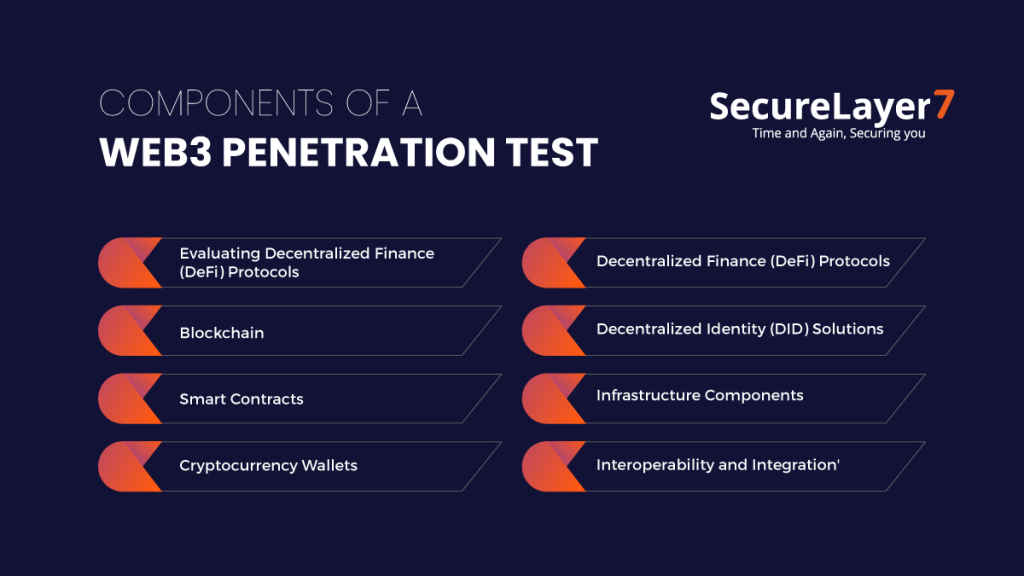
Blockchain
During a blockchain penetration test, the focus is on assessing the security of the underlying blockchain network. Here are the main areas to consider:
- Consensus Mechanisms: Evaluate the algorithm used for reaching consensus, such as Proof of Work (PoW) or Proof of Stake (PoS). Test the security of the consensus mechanism to ensure it is resistant to attacks and maintains the integrity of the network.
- Transaction Validation: Assess how transactions are validated within the blockchain. Verify that the network properly rejects invalid or malicious transactions, ensuring the integrity of the system.
- Data Integrity: Test the immutability and consistency of the data stored on the blockchain. Ensure that the blockchain’s data has not been tampered with and remains consistent across the network.
- Double-Spending Protection: Verify that the blockchain has measures in place to prevent double-spending attacks, where a user spends the same cryptocurrency twice. This is crucial for maintaining the integrity of the transactions.
- 51% Attacks: Assess the blockchain’s resistance to 51% attacks, where an attacker gains control of the majority of the network’s mining power. Evaluate the network’s ability to detect and mitigate such attacks.
- Transaction Malleability: Check if the blockchain is susceptible to transaction malleability, where an attacker can modify transaction IDs without changing the content. Ensure the blockchain has safeguards in place to prevent this vulnerability.
- Configuration and Implementation: Review the implementation and configuration of the blockchain protocol. Look for any misconfigurations or vulnerabilities that could expose the network to attacks or unauthorized access. Assess encryption, secure communication channels, and access controls.
By thoroughly testing the security of the blockchain network in these areas, organizations can identify and address vulnerabilities, ensuring the overall strength and reliability of the blockchain infrastructure.
Smart Contracts
When it comes to assessing the security of smart contracts deployed on the blockchain, it is crucial to conduct a thorough evaluation to identify vulnerabilities and ensure the overall integrity of the contracts. Here are the key components to consider:
- Security Assessment: Evaluate the security of the smart contracts to identify vulnerabilities that could be exploited by attackers. This includes examining the logic of the contracts, input validation mechanisms, and contract-specific vulnerabilities.
- Logic Flaws: Review the smart contract code to identify logic flaws that could potentially lead to unintended behaviors or malicious manipulation of the contract’s state. These flaws can be exploited by attackers to gain unauthorized access or control.
- Input Validation: Assess how the smart contract handles user input and verify if it follows proper input validation practices. Inadequate input validation can result in vulnerabilities such as unexpected input, boundary conditions, or lack of data sanitization, which can be exploited by attackers.
- Reentrancy Attacks: Test the smart contract for vulnerabilities related to reentrancy attacks. Reentrancy attacks occur when a contract allows multiple calls within a single transaction, enabling malicious contracts to manipulate the state and potentially exploit vulnerabilities.
- Code Review: Review the smart contract’s code for adherence to best practices, secure coding standards, and known secure patterns. This includes following principles such as least privilege, separation of concerns, and proper resource management.
By assessing the security of smart contracts, identifying vulnerabilities, and adhering to best practices, organizations can minimize risks and ensure the integrity of their blockchain-based applications. SecureLayer7’s Smart Contract Auditing Service can be a valuable resource in this process, providing expertise and specialized services to bolster the security of smart contracts.
Cryptocurrency Wallets
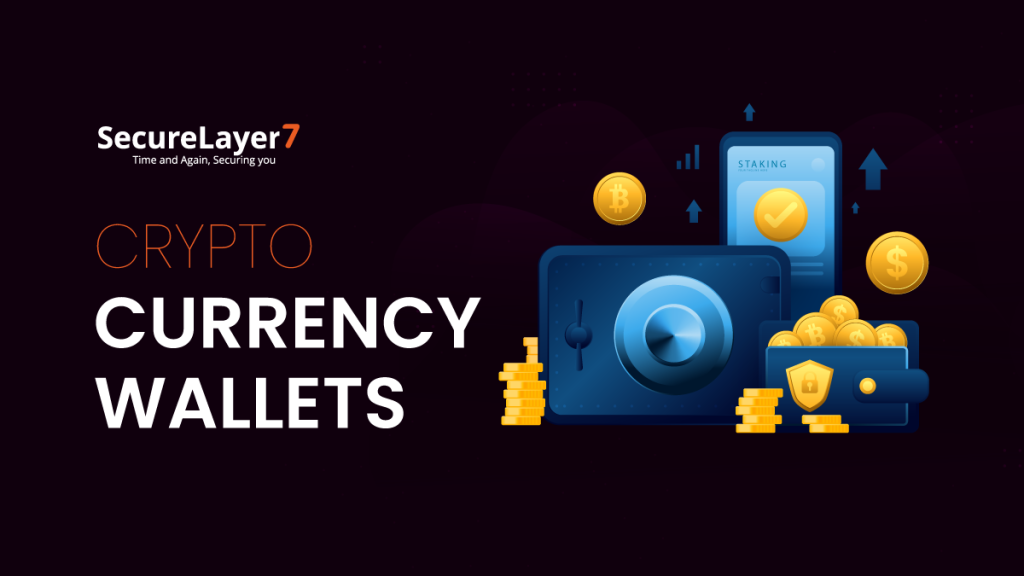
When conducting a security assessment of cryptocurrency wallets used for storing and managing cryptocurrencies, it is crucial to evaluate various aspects of their security. Here are the key areas to focus on:
- Wallet Security Assessment: Assess the overall security of the cryptocurrency wallet to identify vulnerabilities that could expose users’ funds to theft or unauthorized access.
- Encryption Mechanisms: Evaluate the wallet’s encryption mechanisms to ensure that sensitive data, such as private keys or seed phrases, are properly protected. Verify the strength of encryption algorithms and implementation practices.
- Key Management Practices: Evaluate the wallet’s key management practices, including key generation, storage, and backup procedures. Assess if the wallet implements secure key storage mechanisms, such as hardware wallets or secure enclave technologies.
- Secure Storage of Sensitive Information: Verify how the wallet securely stores sensitive information, such as private keys or seed phrases. Assess if the wallet employs secure storage methods, such as encrypted storage, secure elements, or offline storage solutions.
- Insufficient Entropy: Test for vulnerabilities related to insufficient entropy in key generation processes. Insufficient entropy can lead to predictable or weak keys, making them easier to guess or brute-force.
- Weak Passwords: Test the strength of passwords used to protect the wallet. Verify if the wallet enforces strong password requirements and implements measures to prevent password cracking or brute-force attacks.
- Insecure Communication Channels: Assess the security of communication channels used by the wallet, such as network connections or data synchronization. Verify if the wallet uses secure communication protocols, such as Transport Layer Security (TLS), to protect data in transit.
By evaluating the security of cryptocurrency wallets in terms of encryption mechanisms, key management practices, and secure storage of sensitive information, organizations can ensure that users’ funds are well protected. Testing for vulnerabilities like insufficient entropy, weak passwords, or insecure communication channels helps identify potential weaknesses and mitigate risks associated with cryptocurrency wallet security.
Decentralized Finance (DeFi) Protocols
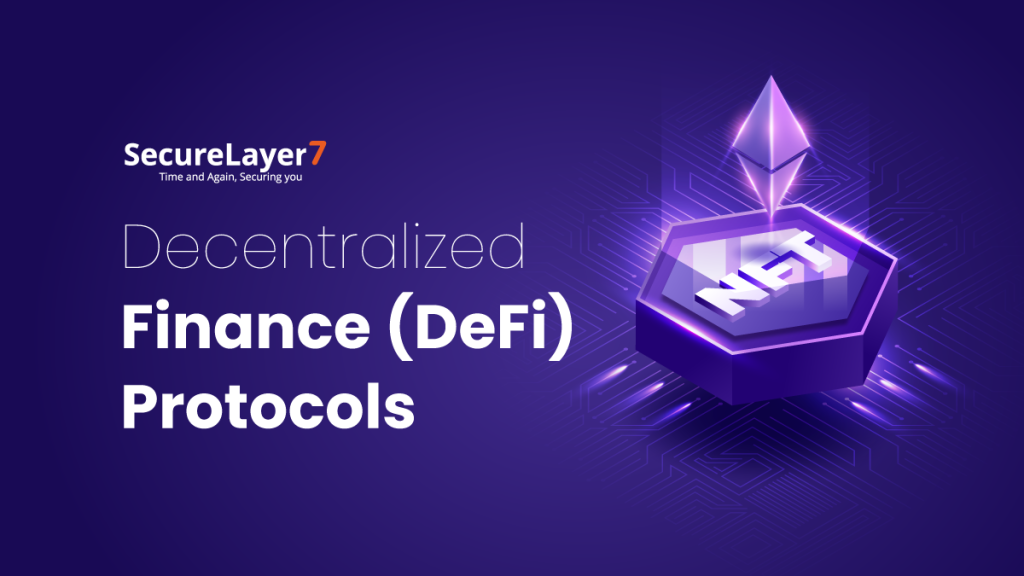
When analyzing the security of Decentralized Finance (DeFi) protocols, which encompass lending, borrowing, and decentralized exchanges, it is important to focus on the following areas:
- Platform Security Analysis: Evaluate the overall security posture of the DeFi platform, considering factors such as the architecture, codebase, and underlying infrastructure. Identify potential vulnerabilities that could impact the platform’s security.
- Smart Contract Review: Review the smart contracts that govern the protocols to identify vulnerabilities and potential attack vectors. Look for logic flaws, input validation issues, or other contract-specific vulnerabilities that could be exploited by malicious actors.
- External Protocol or Oracle Integration: Assess the integration of external protocols or oracles within the DeFi platform. External dependencies can introduce additional security risks, so it’s important to evaluate their security posture and potential impact on the overall platform security.
- Audit Smart Contract Code: Conduct a comprehensive audit of the smart contract code, examining its adherence to best practices, secure coding standards, and known secure patterns. Verify if the contracts follow the principle of least privilege, separation of concerns, and proper resource management.
- Secure Communication and Data Integrity: Evaluate the security of communication channels and data integrity within the DeFi platform. Ensure that the transmission of sensitive data is protected through encryption, secure protocols, and appropriate access controls.
- External Service Integration: Assess the security of any external services integrated with the DeFi platform, such as wallet providers or identity verification services. Verify if these services implement robust security measures to prevent unauthorized access or data breaches.
- Continuous Monitoring and Incident Response: Establish mechanisms for continuous monitoring of the DeFi platform’s security and implement an effective incident response plan. Regularly monitor for anomalies, security events, and emerging threats to promptly respond and mitigate potential risks.
By conducting a thorough security analysis of DeFi protocols, reviewing smart contracts for vulnerabilities, assessing external integrations, and ensuring secure communication, organizations can enhance the security of their DeFi platforms and better protect user assets. Regular audits and continuous monitoring are vital to maintaining a strong security posture in the dynamic landscape of DeFi.
Decentralized Identity (DID) Solutions
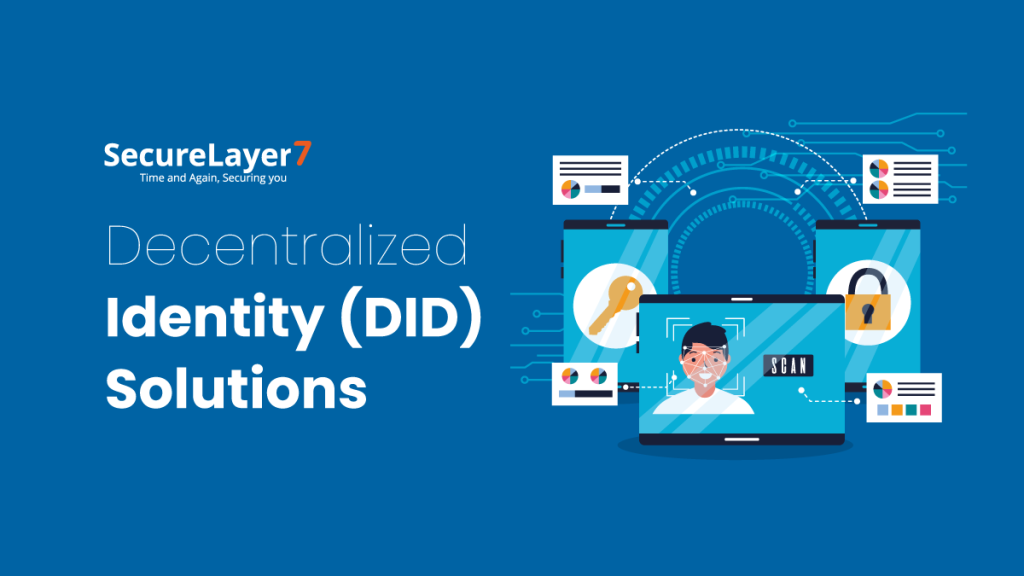
When evaluating the security of Decentralized Identity (DID) solutions, which include self-sovereign identity or decentralized identity management systems, it is important to focus on the following areas:
- DID Implementation Security: Assess the overall security of the DID solution, including the architecture, protocols, and cryptographic mechanisms used. Identify potential vulnerabilities that could compromise the security of the identity system.
- Privacy and Confidentiality of User Data: Evaluate how the DID solution handles user data, ensuring that privacy and confidentiality are protected. Assess if the solution incorporates privacy-enhancing technologies, such as data anonymization, encryption, or zero-knowledge proofs.
- Authentication Mechanisms: Assess the authentication mechanisms used within the DID solution to ensure the integrity and security of user identity. Verify if the solution implements strong authentication protocols, multi-factor authentication, or other robust identity verification methods.
- Key Management Practices: Evaluate how the DID solution manages cryptographic keys, including key generation, storage, and revocation procedures. Verify if the solution follows secure key management practices to prevent unauthorized access or key compromise.
- Trust and Interoperability: Assess the trust model of the DID solution, including the mechanisms for establishing trust among different entities in the decentralized identity ecosystem. Verify if the solution supports interoperability with other identity systems and protocols while maintaining security and privacy.
- Compliance with Standards and Regulations: Evaluate if the DID solution adheres to relevant standards and regulations concerning privacy, data protection, and identity management. Compliance with industry best practices and regulations helps ensure the security and legal compliance of the solution.
- Security Audits and Penetration Testing: Conduct security audits and penetration testing of the DID solution to identify vulnerabilities and potential attack vectors. Regular testing helps uncover security weaknesses and allows for remediation before they can be exploited.
By evaluating the security of DID implementations, assessing the privacy and confidentiality of user data, and reviewing authentication mechanisms and key management practices, organizations can enhance the security and trustworthiness of decentralized identity solutions.
A strong focus on privacy, encryption, secure key management, and compliance contributes to the overall integrity and security of the decentralized identity ecosystem.
Infrastructure Components
When reviewing the security of infrastructure components in a blockchain environment, it is essential to focus on the following areas:
- Security Configurations of Blockchain Nodes: Review the security configurations of blockchain nodes, including access controls, authentication mechanisms, and authorization policies. Ensure that only authorized entities have access to the nodes and that the nodes are properly protected against unauthorized access.
- Network Security: Evaluate the network security measures implemented within the blockchain infrastructure. This includes securing network connections, implementing firewalls, and employing intrusion detection and prevention systems to detect and mitigate network-based attacks.
- Secure Communication Protocols: Verify the use of secure communication protocols, such as Transport Layer Security (TLS), to protect communication between nodes, clients, and other components within the blockchain infrastructure. Encryption and secure protocols help prevent eavesdropping and data tampering.
- API Gateways: Test the security of API gateways that provide access to the blockchain infrastructure. Assess if the gateways enforce proper authentication, authorization, and input validation mechanisms. Verify if they have protection against common web vulnerabilities, such as SQL injection or Cross-Site Scripting (XSS).
- Data Storage Security: Assess the security of data storage systems used in the blockchain infrastructure. This includes both centralized and decentralized storage systems. Verify if the data is encrypted at rest, access controls are properly configured, and security measures are in place to protect against data breaches or unauthorized modifications.
- System Monitoring and Logging: Ensure that proper monitoring and logging mechanisms are in place to detect and respond to security incidents within the infrastructure. This includes monitoring for unusual activities, analyzing logs for potential security events, and implementing alerting mechanisms for timely incident response.
- Vulnerability Assessments and Penetration Testing: Conduct regular vulnerability assessments and penetration testing to identify security weaknesses within the infrastructure. This helps uncover potential vulnerabilities and allows for their remediation before they can be exploited by attackers.
By reviewing the security configurations of blockchain nodes, testing the security of supporting infrastructure components, and implementing robust network security measures, organizations can enhance the overall security of their blockchain infrastructure.
Regular monitoring, vulnerability assessments, and penetration testing help identify and address security gaps, ensuring the integrity and availability of the infrastructure.
Interoperability and Integration
When assessing the security of interoperability and integration between different blockchain networks or protocols, it is important to focus on the following areas:
- Interoperability Mechanisms: Evaluate the security of the mechanisms used for interoperability between different blockchain networks or protocols. This includes technologies like cross-chain bridges, atomic swaps, or interoperability protocols. Verify if these mechanisms adhere to secure design principles and implement robust security controls.
- Data Transfer Security: Assess the security measures in place for data transfers between different blockchain networks or protocols. Verify if the data is encrypted during transit to ensure confidentiality and integrity. Assess if secure communication protocols, such as Transport Layer Security (TLS), are utilized to protect data exchange.
- Cross-Chain Communication: Evaluate the security of cross-chain communication mechanisms that enable interaction between different blockchain networks. Verify if the communication channels are secured against eavesdropping, tampering, or replay attacks. Assess if the protocols used for cross-chain communication have undergone security audits and adhere to best practices.
- Integration with External Systems: Assess the security of integration points between the blockchain networks or protocols and external systems. This includes evaluating APIs, data feeds, or other communication channels used for interaction. Verify if proper access controls, authentication mechanisms, and input validation are implemented to prevent unauthorized access and protect against common web vulnerabilities.
- Secure Data Mapping and Transformation: Evaluate how data is mapped and transformed between different blockchain networks or protocols. Verify if the mapping process is secure and does not introduce vulnerabilities, such as data leakage or injection attacks. Assess if data integrity and consistency are maintained during the mapping and transformation process.
- Auditing and Testing: Conduct regular security audits and testing to identify vulnerabilities and weaknesses in interoperability mechanisms and data transfers. This includes vulnerability assessments, penetration testing, and code reviews to uncover potential security gaps and ensure the robustness of the integration.
By evaluating the security of interoperability mechanisms, assessing the security of data transfers and cross-chain communication, and ensuring secure integration with external systems, organizations can facilitate secure and reliable interaction between different blockchain networks or protocols. Implementing secure protocols, conducting regular security assessments, and adhering to best practices contribute to the overall security and trustworthiness of the interoperability infrastructure.
Here are some of the top vulnerabilities that have been exploited in the past in Web3, along with real-world examples:
- Reentrancy: In 2016, the DAO (Decentralized Autonomous Organization) attack exploited a reentrancy vulnerability in the smart contract code, allowing the attacker to repeatedly withdraw funds before the balance was updated. This resulted in a significant loss of funds and led to a hard fork in the Ethereum blockchain.
- Batchoverflow and Proxyoverflow: In 2018, the batchoverflow and proxyoverflow vulnerabilities were discovered in certain smart contracts, including the BeautyChain and FCoin exchanges. These vulnerabilities allowed attackers to manipulate integer overflow conditions and execute arbitrary code, leading to the theft of funds from the affected platforms.
- Parity Wallet Hack: In 2017, a vulnerability in the Parity multi-signature wallet smart contract was exploited, resulting in the loss of millions of dollars’ worth of Ether. The vulnerability allowed an attacker to take control of the wallet contract and drain funds from affected wallets.
- 51% Attack: A 51% attack occurs when an attacker gains control of the majority of the mining power in a blockchain network. This enables them to manipulate transaction history, double-spend coins, or disrupt the network. In 2020, the Ethereum Classic network experienced multiple 51% attacks, leading to the reorganization of the blockchain and the theft of funds.
- Cross-Site Scripting (XSS): Cross-site scripting vulnerabilities occur when malicious scripts are injected into web pages viewed by users, allowing attackers to steal sensitive information or perform unauthorized actions. While not specific to Web3, XSS vulnerabilities can affect dApps and other web-based interfaces. An example is the attack on the MyEtherWallet platform in 2018, where users were redirected to a malicious website that stole their credentials.
These examples highlight the importance of conducting thorough security assessments and implementing best practices to mitigate vulnerabilities in Web3 applications and platforms. Regular code audits, penetration testing, and adherence to secure coding standards are essential to protect against these and other potential security risks.
Web3 pentesting methodology
A comprehensive Web3 penetration testing methodology helps ensure a systematic approach to identifying vulnerabilities and assessing the security of blockchain-based applications. While specific methodologies may vary depending on the context and tools used, the following section provides an overview of a typical Web3 pentesting methodology:
- Information Gathering: Begin by gathering relevant information about the target system, such as the blockchain network, smart contracts, dApps, and associated infrastructure. This includes identifying the technology stack, protocol specifications, smart contract addresses, APIs, and any available documentation.
- Threat Modeling: Perform a threat modeling exercise to identify potential attack vectors and prioritize testing efforts. Analyze the architecture, components, and interactions to determine the most critical assets and potential vulnerabilities that may exist.
- Blockchain Security Assessment: Assess the security of the underlying blockchain network. Test the consensus mechanism, transaction validation, and data integrity. Verify the configuration to identify vulnerabilities such as double-spending, 51% attacks, or transaction malleability.
- Smart Contract Audit: Conduct a thorough audit of the smart contracts deployed on the blockchain. Identify vulnerabilities such as logic flaws, input validation issues, reentrancy attacks, or other contract-specific vulnerabilities. Review the code for best practices, secure coding standards, and adherence to known secure patterns. Tools like SecureLayer7’s Smart Contract Auditing Service can be used for comprehensive smart contract security assessments.
- dApp Security Assessment: Evaluate the security of the frontend and backend components of the dApp. Test for common web application vulnerabilities like Cross-Site Scripting (XSS), Cross-Site Request Forgery (CSRF), SQL injection, or insecure direct object references. Check the integration of the dApp with smart contracts and ensure secure communication between the frontend and blockchain.
- Cryptocurrency Wallet Assessment: Assess the security of wallets used for storing and managing cryptocurrencies. Evaluate encryption mechanisms, key management practices, and secure storage of sensitive information. Test for vulnerabilities like insufficient entropy, weak passwords, or insecure communication channels.
- DeFi Protocol Security Assessment: Analyze the security of DeFi platforms, including lending, borrowing, or decentralized exchanges. Review the smart contracts governing the protocols for vulnerabilities and potential attack vectors. Assess the integration of external protocols or oracles, as they can introduce additional security risks.
- Infrastructure Assessment: Review the security configurations of blockchain nodes, including access controls, network security, and secure communication protocols. Test the security of supporting infrastructure, such as API gateways, data storage, or decentralized storage systems.
- Interoperability and Integration Assessment: Evaluate the security of interoperability mechanisms between different blockchain networks or protocols. Assess the security of data transfers, cross-chain communication, or integration with external systems.
- Reporting and Remediation: Document all findings, including identified vulnerabilities, their impact, and recommended remediation measures. Provide clear and actionable recommendations to address the identified security risks. Work closely with the development team and stakeholders to prioritize and implement the necessary security fixes.
- Ongoing Security Maintenance: Encourage continuous monitoring, vulnerability assessments, and periodic penetration testing to ensure the ongoing security of the Web3 environment. Stay up-to-date with the latest security threats, industry best practices, and evolving blockchain technologies.
It’s important to note that this methodology provides a general framework and can be customized based on the specific needs and scope of the Web3 project.
Engaging with experienced blockchain security professionals and utilizing specialized tools and services, such as those offered by SecureLayer7, can greatly enhance the effectiveness and thoroughness of the Web3 penetration testing process.
When should you pentest?
Pentesting, or penetration testing, is essential at various stages to ensure the ongoing security of Web3 applications.
Firstly, before deploying a Web3 application, a pentest should be conducted to identify and address vulnerabilities, ensuring a secure launch.
Pentesting should also be performed when making significant updates, integrating external systems, or modifying smart contracts to avoid introducing new vulnerabilities.
Additionally, regular pentesting is often required for regulatory compliance, demonstrating adherence to security standards and obligations.
Pentesting should be part of ongoing security assessments to proactively identify new vulnerabilities, assess the overall security posture, and strengthen the system’s security controls.
Overall, pentesting should be seen as a vital component of a proactive security strategy, enabling organizations to identify and remediate vulnerabilities, minimize the risk of breaches, and enhance the security of Web3 applications and systems.
Summing Up
In the ever-evolving world of Web3 applications, ensuring the security of decentralized systems is paramount.
Penetration testing plays a crucial role in identifying vulnerabilities, assessing risks, and strengthening the overall security posture of Web3 applications.
By following a comprehensive methodology and conducting regular pentesting, organizations can proactively safeguard against potential threats and protect user data, digital assets, and the integrity of the blockchain network.
With the increasing adoption of Web3 technologies, prioritizing security through pentesting is vital to building trust, maintaining regulatory compliance, and enabling secure decentralized experiences for users.
At SecureLayer7, we specialize in conducting comprehensive audits of smart contracts to identify vulnerabilities and ensure the integrity of your blockchain-based applications. Our team of experienced blockchain security experts meticulously examines the code, searching for potential flaws, logic errors, and vulnerabilities that could compromise the security and functionality of your smart contracts.
With our Smart Contract Audit Service, you can rest assured that your smart contracts are thoroughly analyzed using industry-leading tools and methodologies.
We assess the implementation, logic, and adherence to best practices, secure coding standards, and known secure patterns. Our detailed reports provide you with a clear understanding of any identified vulnerabilities, along with actionable recommendations for remediation.
Don’t leave the security of your smart contracts to chance. Choose SecureLayer7 as your trusted partner in securing your blockchain-based applications. Contact us today to learn more about our Smart Contract Audit Service and take the proactive steps towards a secure and successful blockchain journey.